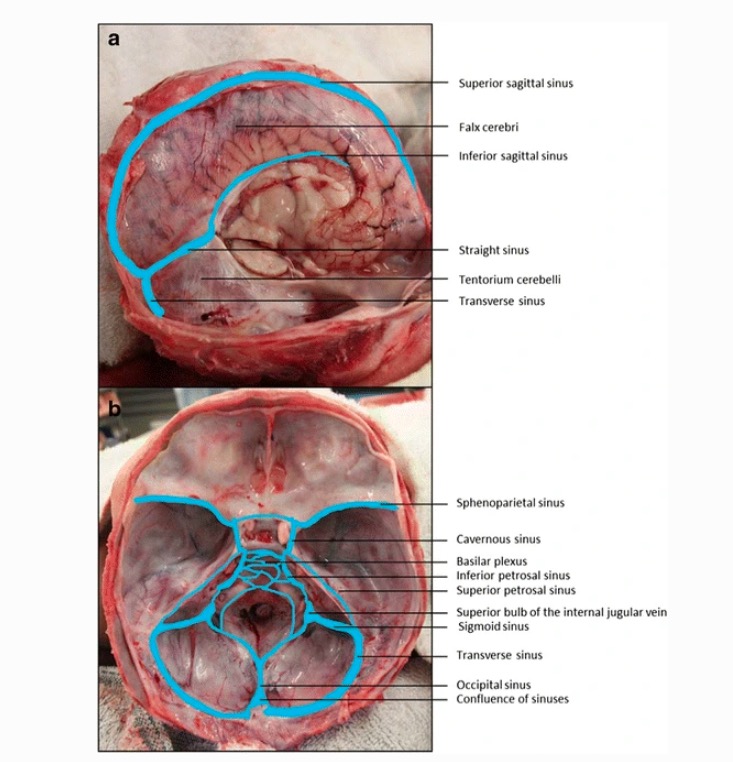Playlist
Show Playlist
Hide Playlist
Subarachnoid Space, Epidural Space and Subdural Space
-
Slides 19 Meninges BrainAndNervousSystem.pdf
-
Reference List Anatomy.pdf
-
Download Lecture Overview
00:01 When we think about the meninges, we also have to be aware of meningeal spaces. 00:08 One of these meningeal spaces is real. Two of these spaces are potential or pathologic in nature. So, let’s take a look at the real meningeal space first. I've mentioned this earlier to you. This is going to be the subarachnoid space which is highlighted in green and also labelled for you. This space exists between the arachnoid and the pia mater. This is the space that contains cerebrospinal fluid. Potential spaces form pathologically. We can have an epidural space. This space would exist between the skull and the periosteal layer if it happened to form. The other space would cause a separation of the arachnoid from the meningeal layer of the dura mater. So that would be occurring in this area for example right in through here where we have the arachnoid adherent to the darker gray dura mater. 01:23 If space developed between those areas, that would be subdural in nature. These spaces will develop during a cranial hemorrhage for example. If there is an arterial bleed, you could have an epidural hematoma. If there is a venous bleed, you could then have a subdural hematoma.
About the Lecture
The lecture Subarachnoid Space, Epidural Space and Subdural Space by Craig Canby, PhD is from the course Meninges.
Included Quiz Questions
Which of the following meningeal spaces contains CSF?
- Subarachnoid space
- Epidural space
- Periosteal space
- Both epidural and subdural spaces
- Subdural space
Which of the following statements about the epidural space is INCORRECT?
- It is a real space that is always present.
- Severe trauma to the skull could be a possible cause of an epidural hematoma.
- Hematoma formation in the epidural space causes severe symptoms.
- It is a pathological space.
Customer reviews
3,0 of 5 stars
| 5 Stars |
|
0 |
| 4 Stars |
|
0 |
| 3 Stars |
|
1 |
| 2 Stars |
|
0 |
| 1 Star |
|
0 |
Una imagen con todos los nombres de los aspectos que menciona, podria mejoar la explicación. Gracias.




